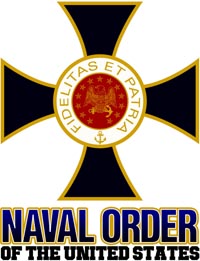News & Tall Tales. 1800s.

The Chinese Historical Society
° Chinese in San Francisco ° Chinese Interpreters ° Anti-Coolie Tax ° Chinese Merchants ° Buddhist Temple 1856 ° Little Pete ° Opium (China, Europe, North America)
In 1848, records indicate that the first Chinese immigrants - two men and one women - arrive in San Francisco on the American brig, Eagle just prior to the discovery of gold in 1849 at Sutter's Mill.
In 1859, "The Chinese School" was created and Chinese children were assigned to this "Chinese only" school. They were not permitted into any other public schools in San Francisco.
The industrious Chinese proved a "threat" to the working community, so in 1862, California decided to publish an "Anti-Coolie Tax," which 1862 California’s Anti-Coolie Tax, which severely restricted the rights of California's Chinese (which were referred to as "Mongolian" in the writ) in which type of industry they could then engage in.
In 1874, a San Francisco real estate circular wrote a "treatise" for "Atlantic papers," which stated:
All comparisons between Irish and German immigration and that of the Chinese are unjust. The former make their homes here, buy farms and homesteads, are of the same general race, are buried here after death, and take an interest and aid in all things pertaining to the best interests of the country.
The Chinese come for a season only; and, while they give their labor, they do not expend the proceeds of such labor in the country. They do not come to settle or makes homes, and not one in fifty of them is married." Their women are all suffering slaves and prostitutes, for which possession murderous feuds and high-handed cruelty are constantly occurring. To compare the Chinese with even the lowest white laborers is, therefore, absurd.
he Chinese in America: A Narrative History
Iris Chang
The first significant Chinese immigration to the United States began in the 1850s, when refugees from the Taiping War and rural poverty heard of "the Golden Mountain" across the Pacific. They reached California, and few returned home, but the universally acknowledged hard work of those who stayed and survived founded a great deal more than the restaurants and laundries that formed the commercial core. Chinese immigrants building the Central Pacific Railroad used their knowledge of explosives to excavate tunnels (and discourage Irish harassment).
Chinese workers also married within the Irish community, spread across America and survived the racist Chinese Exclusion Act of 1880, which lost much of its impact when San Francisco's birth records were destroyed in the earthquake and fire of 1906 and no one could prove that a person of Chinese descent was not native born. Chang finds 20th-century Chinese-Americans navigating a rocky road between identity and assimilation, surviving new waves of immigrants from a troubled China and more recently from Taiwan and Hong Kong. Many Chinese millionaires maintain homes on both sides of the Pacific, while "parachute children" (Chinese teenagers living independently in America) are a significant phenomenon. Unfortuantely, old-fashioned racism -- among any race -- is not dead; Jerry Yang founded Yahoo!, but scientist Wen Ho Lee was, according to Chang, persecuted as much for being Chinese as for anything else.
Tongs, Gangs, and Triads: Chinese Crime Groups in North America
Peter Huston
This book explores the Chinese tradition of tongs, gangs, triads and secret societies and their frequent involvement in organized crime, as well as their more recent and growing collusion with Chinatown street gangs. The book also shows the correlation to Chinese culture and history in general.
The Snakehead:
An Epic Tale of the Chinatown Underworld and the American Dream
Patrick Radden Keefe investigates a secret world run by a surprising criminal: a charismatic middle-aged grandmother, 
Keefe reveals the inner workings of Sister Ping’s complex empire and recounts the decade-long FBI investigation that eventually brought her down. He follows an often incompetent and sometimes corrupt INS as it pursues desperate immigrants risking everything to come to America.

The Naval Order of the United States has a history dating from 1890. Membership includes a wide range of individuals, many with highly distinguished career paths.
The San Francisco Commandery meets the first Monday of each month at the San Francisco Italian Athletic Club in San Francisco, California and holds two formal dinners each year.



 Copyright ~ 1998-2018.
Copyright ~ 1998-2018. 